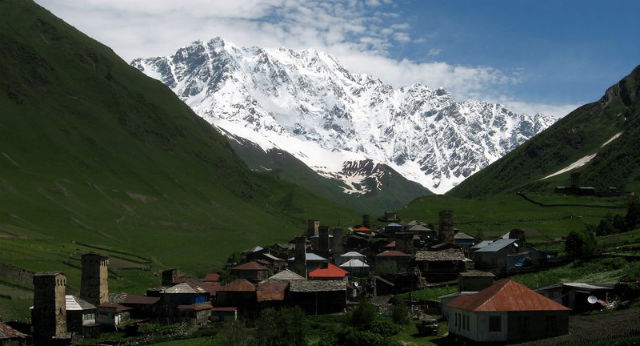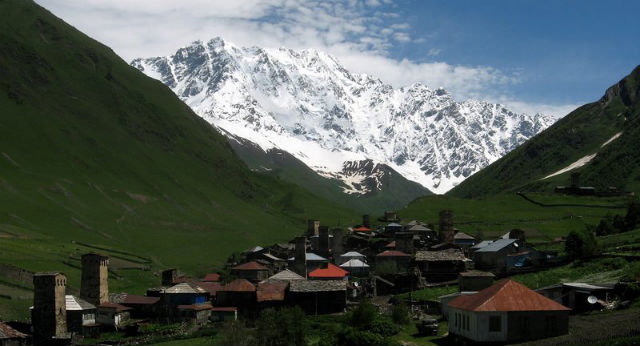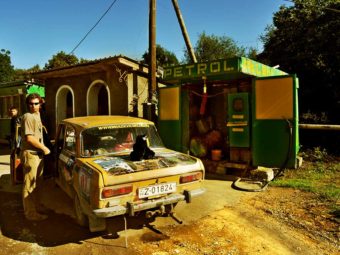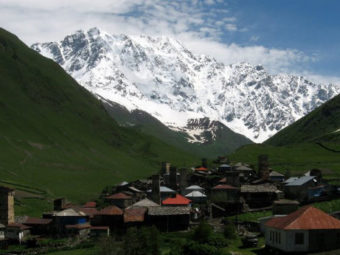Once a country of bandits and bad roads, a lot has changed in mountainous Svaneti, Georgia.
Tucked up in the Caucasus Mountains, this infamous region has suddenly boomed into Georgia’s own mini-Switzerland, thanks to the new airport in Mestia and the relatively new road running from Zugdidi to Mestia, which has cut the journey time down from 6 hours to just 2.
While modernization is all well and good in general, it has taken out a lot of the fun of visiting Mestia. Swiss chalets are popping up downtown, which jar against the classic Svan defensive towers, and the town is in danger of losing its Svan Fortunately, for the moment, the village of Ushguli in the heart of Svaneti is still untouched, but with a new road brewing, how long will it be until that also gets turned into a new Alpine style resort?
The Highest Inhabited Village in Europe
Ushguli might be a small village with crumbling towers and livestock running free in the muddy streets, but it has certainly earned its claim to fame as being the highest continuously inhabited village in Europe, clocking in at over 2200m above sea level.
The community is spread across 4 hamlets: Zhibiani. Chvibiani, Chazhashi and Murqmeli.The defensive towers stand in the mix of ruin and continued population carrying on traditions that are firmly etched in history. The streets are paved with stepping-stones, mud and animal waste, where pigs, cows, bulls and goats get in the right of way and local Svan boys gallop through the streets bareback on their horses.
On first impression, it feels like time has forgotten Ushguli, except for the occasional electricity pylon, which serves as a modern reminder, and the single café selling woodcarvings, beer and kubdari, a local meat pie.
Compared to Mestia, Ushguli feels like it’s escaped the tourist route on first impression, but chatting in English to backpackers, traveling hippies and young Israelis on their first holiday since their military service, it becomes apparent that Ushguli is a hive of people sporting copies of Lonely Planet guidebooks in their backpacks.
Svan Towers
The Svan defensive towers have become synonymous with the region of Svaneti as a whole, and dominate the village skyline in Ushguli as they reach up towards the surrounding mountains in the valley.
You’ll not only find them in Ushguli, but also in Mestia and other villages. Most of these date back to the 9th – 12th centuries and were initially built against raiders and marauders. Each of these 5 storey towers linked up to a house, a residential unit housing families and members of the community.
Even though the Caucasus Mountains carry the peaceful and Zen feeling you’ll find in the remote and wild countryside, the abundance of various tribes scattered across Georgia and the North Caucasus has meant that trouble was never far from the scene. The Svans not only traded with the tribes in the northern part of the mountains, but also saw conflict, since not all interaction was exactly friendly.
Although, relations at home were not smooth either, and the towers helped to protect against the blood feuds going on in their own communities.
Natural Beauty
The historic villages may be beautiful and mysterious, but without the Caucasus Mountains they’d just be another pile of rocks with a history attached to them.
The peak of the Shkhara Mountain and the icy glacier backing onto it frames Ushguli’s towers, defining Svaneti’s culture and regional beauty packaged into one view.
The jagged peaks from the mountains, the dense forests interweaving along riverside gorges and crevices are as much Svaneti as its towers.
The road to and from Ushguli might be a wild dirt track with lethal drops,hairpin bends and crumbling edges, but the region’s natural beauty make driving through the Caucasus so worth it.




